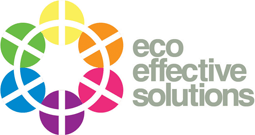Originally published 26 March 2020: https://www.thefifthestate.com.au/articles/nows-the-time-to-recalibrate-to-a-low-carbon-future/
Once we’ve recalibrated our lives, with a heightened awareness of health and our environment, the low carbon economy will be the practical option, writes Mark Thomson from Eco Effective Solutions.
The unforeseen onset of the Coronavirus provides a logical and timely opportunity to rethink our immediate and long term living and working futures. Shifting to a low carbon economy at a local and global scale will create immediate benefits for our community resilience and our planet’s health.
We know the transition to a low carbon economy (LCE) will avoid catastrophic climate change. In our current global health emergency, the benefits of an LCE are amplified. Benefits include trade re-establishment, increased employment opportunities, improved community health, possible greater energy security, business competitiveness in new markets, and ecosystem resilience.
Getting trade back on track
Trade re-establishment may occur when geographically local business networks are strengthened. Many of our business networks have grown lineally, often overlooking local opportunities in pursuit of lucrative distant markets. The deregulation of various sectors, now under review by authorities, will create new local opportunities for those able to move quickly.
Increased employment will result from shifts in the volume, composition and quality of employment across sectors, with the level and distribution of incomes changing. Already, we are witnessing governments, employers and employee organisations recalibrating work sectors to swing displaced workers into different industries where increased demand is expected. Ideally, lower wages may coincide with lower living costs, with a refocus on quality of life as a priority.
Healthcare might actually improve after this crisis
Improved community health levels should result after the initial pandemic shock because better local health capabilities will be activated. Social justice and poverty eradication will be positioned at the forefront of government and community authorities.
Technological improvements will require more localised centres of excellence, facilitating services throughout urban and regional locations. Our communities can be stronger and more purposeful in an LCE.
A more secure, sustainable energy system
Energy security will improve thanks to a smarter distribution of existing energy loads, with less demand in some sectors, and a greater control of peak demand levels.
A diversified work sector operating in a 24-hour economy (which has been underway for some time now) will have the added advantage of improved energy efficiency, therefore decreased greenhouse gas emissions.
Renewable energy sources will prove long term to be more sustainable. The transition to renewable energy should speed up, as smaller renewable power solutions will make more sense in an LCE.
Businesses competitiveness isn’t going anywhere
Business competitiveness will remain, albeit some sectors will undergo complete transformation. Those that have been practising quality systems will benefit from continuous improvement and innovation strategies, which they will find easier to implement than those sectors without strategic business planning experience.
Many mid-sized and large organisations will have major adjustments to make, and small business must understand customer service and quality delivery solutions to survive.
When we recalibrate our lives with an increased awareness of health and our environment, the low carbon economy will just make practical sense.
The way forward
Innovation must be at the forefront of our emerging LCE. We’ve seen great innovation in the green building movement over the years, however, it’s time to diversify innovation into our social development and community health sectors.
The use of green rating tools has transformed the Australian commercial building industry and established human-centric thinking as a priority. Circular economy and cradle-to-cradle thinking provide great opportunities to create a resilient LCE, with benefits to the natural environment as well.
Last November, I visited the office of a US-based architect who’s practice is grounded in the cradle-to-cradle philosophy, William McDonough, and was reminded how progressing to an LCE offers the opportunity “to remake the way we make things”.
He made it clear that our planet’s health, and consequently human health, depends on production systems, and that these systems are spiralling unsustainably towards further planetary damage.
McDonough advocates that production systems, “which mimic nature’s model”, will reduce global damage and shape our healthy future. Understanding that biological and technical cycles underpin the circular economy concept, we require innovation to conceive separation of our biological and technical nutrients for improved recycling and product development.
In an LCE, flows and industry outputs can be reimagined for healthier workplaces and ecosystems. We can now design with low carbon materials, including Cross Laminated Timber (CLT), use low carbon concrete, and use bioplastics instead of fossil fuel-derived plastics.
These materials are creating time and cost efficiencies, and are healthier for our communities and our planet. All such materials are available locally and can be economically used, but it does mean we need to “remake the way we make things”.
Looking holistically at our Australian economy, over the last decade we’ve increasing dependency on global trade with unsustainable products. Many of these products will be directed into landfill, due to their inefficiency to reuse and recycle.
Understanding and designing with biological and technical nutrients is the most effective method to deliver sustainable circular economy solutions.
Over the next months, let’s become innovative and rethink our future to work through our health emergency, solve our climate emergency, and set the foundations for a positive and healthy future.


